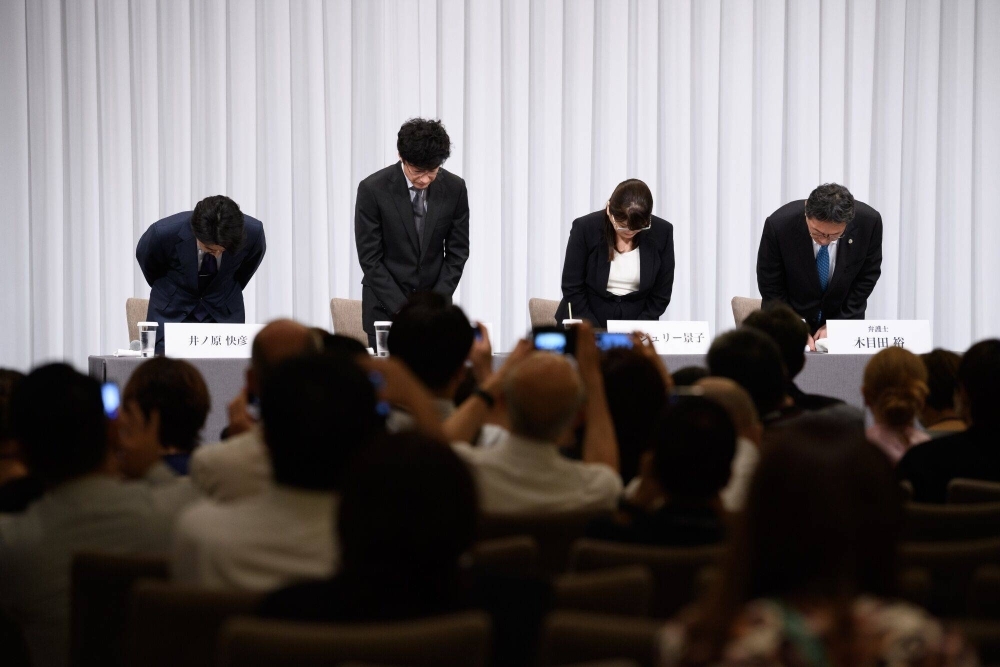What is in a name A lot of baggage and trauma unfortunately
The weight behind “Johnny’s” as survivors and critics push to reexamine a storied brand
By Naomi Sato — Tokyo, September 9, 2023
Voices rising as a legendary agency’s name becomes a flashpoint for reckoning
Lead: When a Name Becomes a Wound Rather Than a Brand
Tokyo — The name “Johnny’s,” long synonymous with Japan’s idol industry and pop culture dominance, is now being contested. Former talents, staffers, and legal claimants are stepping forward with allegations of decades-long misconduct tied not merely to the company’s practices but to the brand identity itself. In 2023, these voices have gained traction in court filings, media disclosures, and public debate, repositioning “Johnny’s” from a mark of stardom to one of trauma. What was once a name meant to inspire fandom is now triggering discussions of harm, power imbalances, and the cost of silence.
Those who say they were harmed point to systemic control over their personal lives, suppression of dissent, pressure to conform, and in some cases — they assert — emotional or physical abuse. What makes the struggle especially fraught is that the name “Johnny’s” is deeply woven into Japan’s entertainment infrastructure, making any pushback a challenge to both culture and commerce. As the waves of exposure broaden, the question becomes: can a name built on deep wounds survive accountability?
In courts, survivors are suing the agency for damage payments and demanding full transparency. In the media, the reports triggered renewed public scrutiny of how talent agencies operate. And in fan communities, some are rethinking how much they idolize a name that might carry pain. The name “Johnny’s” is at the center of this upheaval — not just as a label but as a battleground over remembrance, justice, and change.
The Stakes Behind the Name
The controversy over “Johnny’s” matters because the name is more than a brand — it is a symbol of power, popularity, and control. When trauma is bound to a name, speaking out can feel like attacking cultural pillars. For survivors, reclaiming or rejecting that name is part of their healing. For the public, confronting it is part of societal growth. This name-based reckoning forces questions of accountability: does the brand owe a debt to those harmed in its orbit? Can the legacy survive scrutiny? And how do we balance artistic heritage with moral responsibility?
Former associates argue that intrinsically branding everything under “Johnny’s” created an environment where criticism was internally framed as disloyalty. They say that when you’re branded from day one, boundaries blur between person and product. Reports indicate that numerous talents, over many years, felt compelled to remain silent — fearing career collapse — even when they endured emotional distress or harassment. The name “Johnny’s” acted as both shield and sword: shielding the company’s image from outside view, while sanctioning internal suppression.
As more individuals speak out, the name itself becomes contested territory. Some demand it be retired or disassociated from the agency entirely; others call for structural reforms so the name no longer conveys harm. Either way, the debate is shifting: from discreet industry rumor to national cultural conversation.
Voices Echoing Through the Silence
> “Every time I hear the name, I feel pressure to hide what I lived through.” > — a former Johnny’s associate, speaking on condition of anonymity
> “They monitored private conversations, discouraged us from seeking help, always told us to protect the brand.” > — former staff member, as reported by The Japan Times
Legal filings now reference claims of “mental damages” and demand transparency over decades of internal operations. Survivors assert they deserve not only compensation, but acknowledgment that the name “Johnny’s” itself has been part of the harm. The agency, in turn, has faced mounting pressure from media, activists, and fans to disclose records and transform its internal culture.
Origins of a Legacy and Its Hidden Tolls
The roots of the controversy lie in the founding and evolution of Johnny & Associates, established by Johnny Kitagawa in 1962. Over decades, “Johnny’s” cultivated some of the most famous male idol acts in Japan, building an empire around tightly controlled talent development, image management, and media integration. Yet, behind the polished veneer, rumor and allegation circulated: whispers of misconduct, power concentration, enforced loyalty, and internal silence.
For years, those whispers were largely dismissed or relegated to industry gossip. Kitagawa resisted scrutiny, and his influence shielded the agency from many external challenges. After Kitagawa’s death in 2019, structural shifts and rebranding efforts followed — but the name “Johnny’s” remained a core asset. Critics now say that preserving the name also preserved the system it embodied.
The Japan Times article details how in 2023, new legal action and petitions have reignited discussion about how much the brand owes to its former members and whether the name itself must be rethought.
As this reckoning continues, the entertainment world watches closely: other agencies may face similar scrutiny, and fans may demand more accountability from idols and their management. In shifting the debate into the realm of branding and identity, the Johnny’s case could become a touchstone for how fame, power, and trauma intersect.
Closing: A Name That Must Be Reexamined
The struggle over “Johnny’s” is not just about rebranding or reputation — it's about healing, justice, and redefinition. Survivors seek not only acknowledgment but the power to reshape or retire a name that has haunted them. The agency faces the test of whether it can evolve beyond the weight its name carries. In the end, whether “Johnny’s” continues or fades, the legacy of trauma demands reckoning. And if the name persists, it must no longer be a shorthand for silence.
Style, Structure & Metadata
— **Font & Spacing**: Choose a clean, legible serif or sans-serif font, with consistent spacing (e.g. 1.5 line height), and margins that allow readability.
— **Headers**: Use H1 for the headline; H2 for subheadline, lead, nut graph, major sections, conclusion, and metadata; H3 for byline.
— **Tags / Keywords**: Johnny’s, Japan, entertainment, abuse allegations, trauma, power dynamics, idol industry, reform
— **Source Link**: Japan Times: Johnny’s name issue report
- 5 October 2025 Transfer gossip - October 10, 2025
- Blast at Tennessee military explosives plant - October 10, 2025
- Who are the Pink Ladies Anti migrant hotel protesters - October 10, 2025

